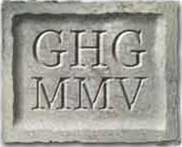
Guarlford History Group
The Guarlford StoryThe Village SchoolSeveral times Inspectors state that the school should really have three teachers, and assistants of varying talent and attendance filled the gap. There are many references in the early part of the Log Book to the ‘migratory’ character of the pupils. This was presumably because agricultural workers often moved to find work as the seasons changed. In November 1908, the Headmaster notes that within seven weeks ten children had been admitted and nine had left. The classes may seem to be very large, but early Log Book entries point out the erratic attendance of the pupils, mainly because of bad weather but also because children stayed at home to help with work on the farm and in the house. Indeed, significantly, special notes are made of times when most of the pupils are actually present. Childhood illnesses were rife: for example, in January 1904, the school was closed for five weeks because of an outbreak of measles, and it is recorded that throughout the lifetime of the school snow and floods kept some children at home, especially the little ones. The ‘catchment area’ was large, and Alf Young of Hall Green recalled that, when he attended Guarlford School from 1928 onwards, the school also used to take its pupils not only from Guarlford village and Hall Green but also from Clevelode, Hangmans Lane on the road to Upton, and as far as the Old Hills at Callow End. The necessity for the able-bodied of all ages to help with the Harvest was recognised and the summer holidays were adjusted accordingly, with two weeks in July and then the whole of September (for the hop-picking), something which continued well into the twentieth century. Even so, an His Majesty’s Inspectorate (HMI) report in 1912 makes particular reference to the fact that there were still too many absences, which can easily be understood, given that even later in the century children were tempted to help in the fields instead of going to school. The highlight of the school year at that time was the summer outing, which would be to the Old Hills at Callow End, where the children had sports and a tea party . . .
|